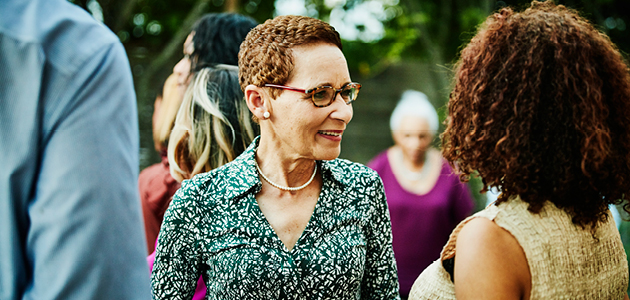A sense of belonging and feeling seen, safe and respected in the space you’re in is important for our well-being. But unfortunately, too many people feel that they are not accepted for who they are and struggle to feel that critical sense of belonging. Unfortunately, without even meaning to, sometimes our words and actions can make this feeling worse.
It takes a conscious effort and may require us to rethink old ideas and change ingrained habits, but there are very simple and kind ways to help everyone around us feel included and respected. We may slip up along the way, but doing our best to give everyone the dignity they deserve is certainly well worth the effort.
Simple ways to be inclusive
- Avoid using gender-specific words like “ladies and gentlemen” when speaking to a group of people. Remember, not everyone identifies as a man or a woman, and unless you know for a fact that every single person in the crowd you’re speaking to does, you may be excluding those who don’t. It doesn’t matter if you understand exactly what it means to be non-binary – what matters is respecting them enough to include them. Choosing inclusive language like, “friends” or “folks” is a very simple change to make.
- Use the right pronouns. If you’re not sure, simply ask what someone’s pronouns are so you don’t make a mistake. Respect the answer – and the person – enough to simply say, “thank you,” and then use their pronouns accordingly.
- Recognize your unconscious biases and prejudices. When you meet someone who is different than you, try not to let those ingrained assumptions about who they are based on their gender, appearance, clothing, race, accent, size, disability or religion impact or influence how you interact with them. It can be jarring to dig deep and discover that you do have some biases and prejudices, but you still have the power to choose kindness in every interaction you have.
- Never comment on someone’s body or physical traits. You may think you are giving someone a compliment by pointing out certain physical characteristics, for example how much you love their afro or the color of their skin, but people who have faced generations of racism and oppression can hear these “compliments” very differently than they are intended. You’re really pointing out differences that have historically caused them to be targets of harm. Likewise, how much someone weighs, their piercings and their body art are not up for discussion, because the last thing you ever want to do is make someone feel uncomfortable in their own skin.
- Don’t assume everyone is as healthy as you are. Disability can be invisible. For example, people dealing with mental illness, traumatic brain injury, diabetes, epilepsy, HIV/AIDS, or chronic fatigue syndrome don’t necessarily have any obvious visual cues pointing to the disability they are living with. Never assume you know what someone is dealing with because we are all walking our own unique path.
It’s not necessarily easy to change the way we think and to push back against the unconscious biases we all have, especially if we’ve never really been challenged to do so. But knowing how it feels to be accepted and included, how can we not want to ensure that those around us have that same level of comfort and ease when they are with us?
In addition to trying to be more inclusive using the steps above, it’s also important to educate ourselves so we can better understand the marginalized people who struggle with acceptance in our societies. You can do your own research online, follow social media accounts belonging to people who discuss marginalization and discrimination and read first-hand accounts to find out what life is really like for people with different lived experiences than yours.
Remember, it’s a process. What matters is taking those steps towards becoming a safe person for those who may have always felt uncomfortable and unwelcome.
For more information about inclusion and how to integrate it into your everyday life, visit Fair Force.
420870 CAN/US (08/22)




